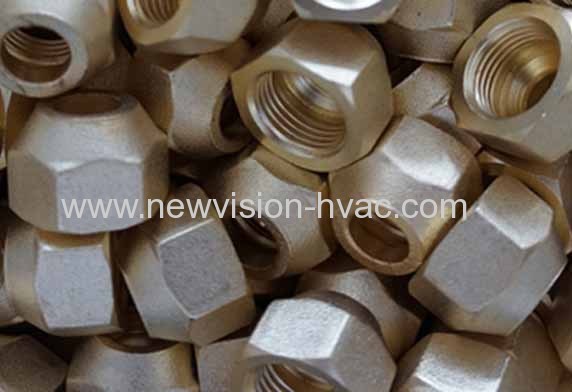Brass Flare Fittings - Forged Nuts
Brass Flare Fittings - Forged Nuts

Flare-Type Connections
All refrigeration flare fittings have to be made with a 45° angle to enable the tubing to fit against the fitting snugly. The process of making the expanding the end of the tube to portray a funnel shape having a 45° angle is called flaring copper tubing. Using a forged flare nut, the flare is compressed against the fitting to produce a leak-proof contact. For efficacy, refrigeration tubing connections have to withstand some 300 psi of pressure without allowing leakages. Since flare connections are metal-to-metal connections, care and attention have to be accorded in making of flared.
Flare Nuts Design
As the most commonly used fitting, the flare nut has to be sized to suit the hole through which the tubing will be inserted. Ordinarily, the hole fits over the tubing, and therefore, any kinks or flats will affect the fit. The nut has threads inside it while the bottom of the nut has a seamless 45° flare to precisely match the flare located at the tubing end. Screwing the nut onto a fitting makes the flare of the tubing to be compressed between the fitting and the nut. The metal-metal contact must be devoid of any ridges and burrs that may interfere with the seal.
Flare Defects – A tubing that is extended to high above the chamfer may cause the flare to extensively widen thus preventing the nut from sliding over the flare. On the other hand, a tubing that is too low, a small flare will result and, as such, it will easily slide through the flare nut. The best flare should fill the bottom without rubbing or binding the threads.
Why waste time when New Vision HVAC can help you all the overheating problems? Call us and let us help you get the best at Brass Flare Nut for your HVAC industries system.





